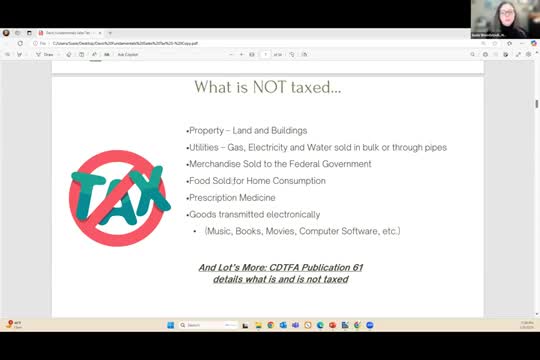Davis reports sales tax trends amid online shopping and economic shifts
February 09, 2025 | Davis, Yolo County, California
This article was created by AI summarizing key points discussed. AI makes mistakes, so for full details and context, please refer to the video of the full meeting. Please report any errors so we can fix them. Report an error »

Davis, CA, is set to navigate a complex landscape of sales tax revenue as the Fiscal Commission discussed key trends and implications during their recent meeting on February 5, 2025. The meeting highlighted the intricacies of the 1% Bradley Burns sales tax and the Measure O transaction and use tax, both critical to the city’s financial health.
The Bradley Burns tax, which applies to sales made within the city, has shown varied performance across different sectors. Notably, the auto and transportation sector, which constitutes about 23% of Davis' sales tax revenue, has experienced a decline, reflecting a broader statewide trend. In contrast, online purchases from out-of-state vendors have seen a 3% increase, indicating a shift in consumer behavior towards e-commerce.
The meeting also addressed the countywide pool distribution method for use tax, which is particularly relevant for goods shipped from outside California. Davis generated approximately 13.8% of all brick-and-mortar sales in Yolo County, translating to about $326,000 from the pool in the third quarter alone. However, the pool's growth is contingent on the performance of neighboring cities, as new businesses can dilute Davis' share.
The discussion underscored the impact of recent legislation, including the requirement for out-of-state vendors to collect California sales tax, which has contributed to increased revenue from online sales. However, the city faces challenges as rising menu prices in restaurants, driven by a new minimum wage law for fast food workers, have deterred diners, leading to a slowdown in restaurant revenue.
Looking ahead, the commission anticipates a continued cautious consumer spending trend, with projections indicating a potential recovery in sales tax revenue in the coming years. The meeting concluded with a commitment to monitor these trends closely, as they will significantly influence Davis' financial strategies and community services in the future.
The Bradley Burns tax, which applies to sales made within the city, has shown varied performance across different sectors. Notably, the auto and transportation sector, which constitutes about 23% of Davis' sales tax revenue, has experienced a decline, reflecting a broader statewide trend. In contrast, online purchases from out-of-state vendors have seen a 3% increase, indicating a shift in consumer behavior towards e-commerce.
The meeting also addressed the countywide pool distribution method for use tax, which is particularly relevant for goods shipped from outside California. Davis generated approximately 13.8% of all brick-and-mortar sales in Yolo County, translating to about $326,000 from the pool in the third quarter alone. However, the pool's growth is contingent on the performance of neighboring cities, as new businesses can dilute Davis' share.
The discussion underscored the impact of recent legislation, including the requirement for out-of-state vendors to collect California sales tax, which has contributed to increased revenue from online sales. However, the city faces challenges as rising menu prices in restaurants, driven by a new minimum wage law for fast food workers, have deterred diners, leading to a slowdown in restaurant revenue.
Looking ahead, the commission anticipates a continued cautious consumer spending trend, with projections indicating a potential recovery in sales tax revenue in the coming years. The meeting concluded with a commitment to monitor these trends closely, as they will significantly influence Davis' financial strategies and community services in the future.
View full meeting
This article is based on a recent meeting—watch the full video and explore the complete transcript for deeper insights into the discussion.
View full meeting
